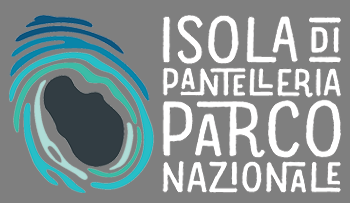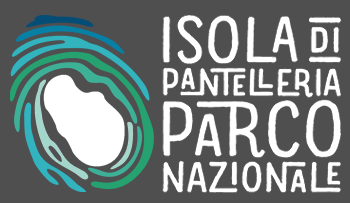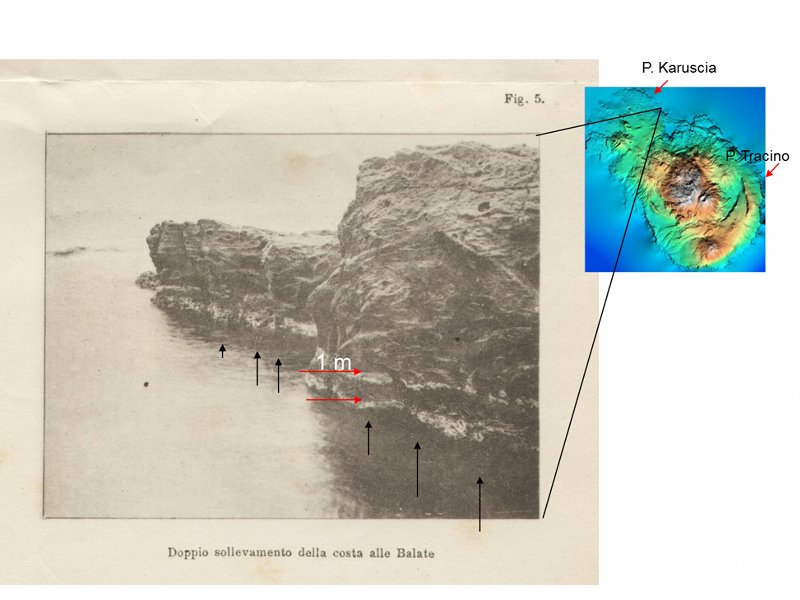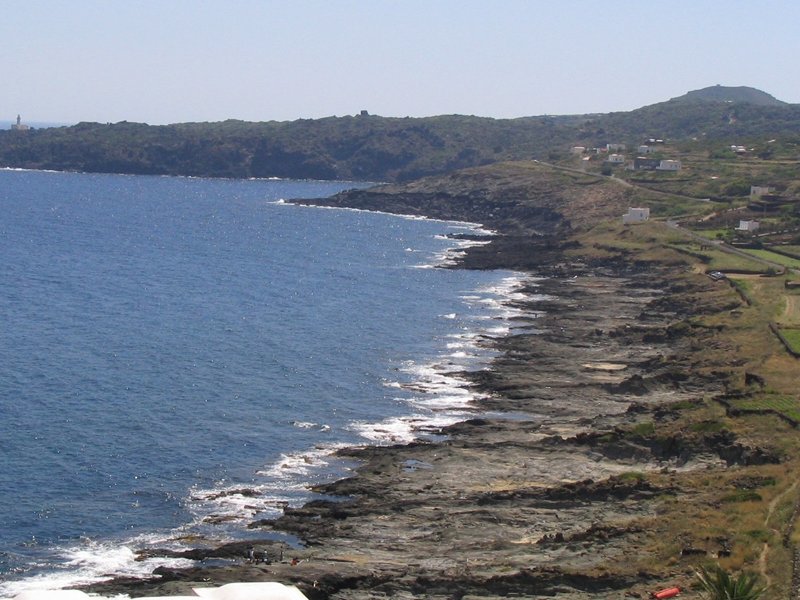- Producers of typical products
- Forum
- Environmental Education
- The Authorities
- Organization and Offices
- Council Notice Board
- Transparent Administration
- Reference Legislation
- Regulations in force
- The plan of the Park
- Consultation of deliberative acts
Home » Natural landscape » Volcanism
Pantelleria 1891. A volcanic eruption told by direct witnesses
Most of the information we have on that eruption, which occurred between 24 May 1890 and the end of November 1891, comes from a beautiful publication, written in November 1891 by a great scientist of Modena origin and transplanted to Catania. We are talking about Annibale Riccò, who was also a great geophysicist and even Rector of the University of Catania.
The first news on the succession of seismic and volcanic events came to Riccò through a close correspondence with Dr. Errera, who, in Pantelleria, edited a series of geophysical instruments. In those letters Errera wrote about his concern for the earthquakes of 24 and 25 May 1890 which had upset the inhabitants of the districts of Gadir, Tracino, Serraglio, Rackhale and up to Scauri.
The damage, up to that moment, was limited to the breaking of about forty cisterns, but the most alarming figure for the inhabitants of the island was the slow but constant lifting of the North-East coast of the island, in particular of the area between Punta Karuscia and Punta Tracino. This lifting was estimated at around 75 centimetres and this measure was carried out by measuring the height variation of the shoreline, clearly indicated by the encrusting organisms that live in the area where the sea waves strike directly.
Another earthquake shocked the islanders on June 12th 1890 but, after some replication in the following days, the phenomenon seemed to have ended and people returned to life as usual.
It should be emphasized that, until June 1890, the phenomenon seemed to be limited to the districts mentioned, while the town of Pantelleria was not interested.
Suddenly, on October 14, 1891, a long sequence of earthquakes began in the town of Pantelleria. These earthquakes, which lasted for over ten days practically without interruption, threw into panic the inhabitants of the island, who left the houses to go to the countryside. In reality the damages were contained: only 5 houses were damaged and for only one the demolition was necessary. But, as often happens in these cases, rumours began to spread among the islanders about legends telling that the island, after an initial uprising, was destined to sink into the sea. It is easy to realize that the atmosphere in the town was very tense, and the situation worsened as a result of the sudden lowering of the water level in the freshwater wells and the drying up of the buvire (brackish water pools) that were along the coast of the island. The climax of the crisis was reached on October 17, when, at around 11.30 am, heading north-west from the harbour of Pantelleria, the sea suddenly rose to the level, agitated by a strange boiling. Some believed that it was the agitation of a large cetacean, but all doubts disappeared when a column of steam began to rise and the first blasts were heard. There was no longer any doubt. An underwater volcanic eruption had begun.
The mayor of Pantelleria, Mr. Valenza, reports that he went by boat with Dr. Errera to observe the phenomenon, and that many dead fish were sighted, with their eyes popping out of their heads and that the temperature of the water was warmer of a degree and a half. But the strangest thing observed was a long strip (about a kilometre) of floating blocks formed by a black spongy magma. A further oddity was the fact that these blocks, when they came out of the depths of the sea, emitted gas under pressure, which often made them literally fly 15-20 meters into the air, before falling back into the water. The person in charge of the service in Pantelleria observed these blocks throughout the night and reported that in the darkness you could see their luminous trails, due to the incandescent gases that made them perfectly visible even from afar.
At this point the panic reached paroxysmal levels and the government decided to send experts and reinforcements to the island "who would take advice and measures". The same Riccò was commissioned to follow the phenomenon and, on board the steamer "Bagnara" that was heading towards Tunis, he reached the island in an adventurous way, due to the sudden worsening of the sea conditions, so that it was necessary to stop over behind Punta della Pozzolana. Here he was received with full honours by the mayor, Errera and the Commander of the Presidium. At this point Riccò recounts that for the first few days it was not possible to go to the eruption area (which was about 4 km north-west of the island) and therefore dedicated himself to the installation of some seismoscopes (instruments for observing the ground movements) and a tank containing mercury, which allowed the observation of the smallest changes in the slope of the ground. Meanwhile, on October 22nd, the Bausan battleship of the Italian Royal Navy arrived, commanded by Colonel De Libero, on which the scientist could carry out the first inspections. On October 23rd, Riccò, together with the Prefect of Trapani, the mayor Valenza, Errera, the captain Canino and the student of Natural Sciences Giuseppe D'Ancona, embarked to carry out all the surveys in the area of the eruption. Here were observed hundreds of black lava blocks floating in water and blowing water vapor ("lava balloons").
Often these blocks jumped into the air or started on the surface of the water, driven by the gas they contained. Others exploded, throwing dangerous fragments. Once the gas was expelled, the blocks sank again. The smell of sulphur was very strong and a serious accident also happened, when Captain Canino was struck in the face by a fragment that caused him a bad wound. The blocks were fished and measured with great effort and some brought back to the ground to be preserved. The exact position of the emission zone of these volcanic bombs was taken and, on the basis of the observations of the preceding days, it was ascertained that the phenomenon was losing intensity. The water temperature had also returned to normal values. A long sounder was lowered which ensured that at that point the seabed was at about 320 meters.
In the following days the explosions slowly ceased and no more blocks of lava were seen rising to the surface. The eruption had ended.
At this point we have news of further findings on the favara emissions and on the fig trees literally burned by the sudden thermal rise of the ground in Karebbi, but the only interesting datum that was found is to refer to the measures of the lifting of the NE coast of the island. Riccò measured them carefully, aided by the master Teti, and reports that in Punta Karuscia the coast rose 25 centimetres and that the elevation grew gradually moving towards Punta Spadillo, to then decrease up to Cala Tramontana, where it was estimated around 50 centimetres. Obviously, as can still be seen today, the most spectacular variation was observed at the Balate, where the coast rose in two clicks up to a maximum of about 80 centimetres.
Suggested by this description, Dr. Mario Mattia (INGV), together with colleagues from the University of Catania Carmelo Monaco and Giorgio De Guidi, worked on various hypotheses of mechanisms that could justify this behaviour during eruptions. The conclusions were reported in two scientific papers that highlighted some interesting things:
Currently the island is characterized by an intense phase of "deflation" which is typical of a volcanic caldera, centred in the south-western area of the island. The evidence of this phase is observed both through the intense negative variations in altitude (carried out by the Vesuvius Observatory by means of levelling measures), and thanks to the SAR satellite interferometry measures. From the analytical inversion of these data we obtain the position of the source of deflation (in principle imaginable as a "magma chamber" which gradually cooled and lost fluids through the numerous fumaroles), which is the one shown in the figure (depth approx. 4 km below sea level).
From the careful observation and from the radiocarbon dating of the alignments of encrusting organisms along the entire coast of the island, it has been possible to find at least three levels that testify, in addition to that of 1891, at least two other episodes of intense lifting of the Pantelleria coast (one between 500 and 900 years ago and one more than 900 years ago). This confirms the fact that the raising of the coast is a mechanism typical of "recent" volcanic activity.
All this testifies, if it were needed, that Pantelleria, as well as a splendid island where to spend the holidays, is also a site of primary volcanological interest, a real open-air laboratory, which would deserve more attention from researchers and the international scientific community.
© 2024 - Ente Parco Nazionale Isola di Pantelleria
Via San Nicola, 5 - 91017 Pantelleria (TP)
Tel +39 0923/569412 - Email: info@parconazionalepantelleria.it - protocollo@pec.parconazionalepantelleria.it
Codice fiscale: 93077090814






